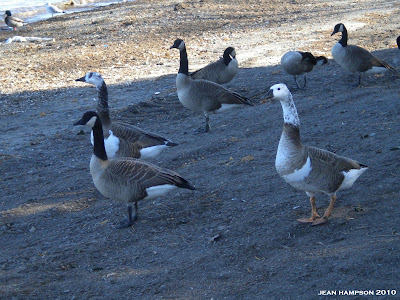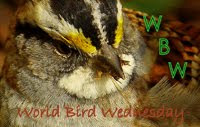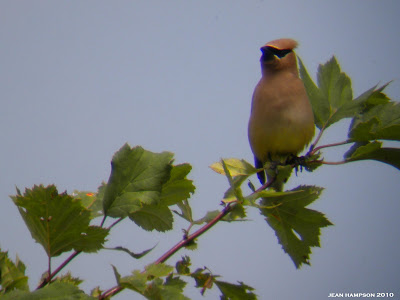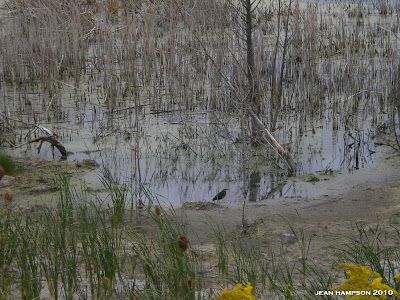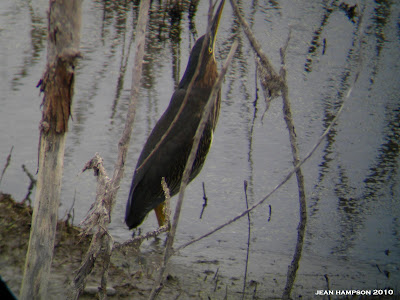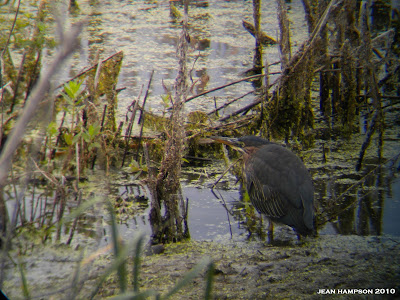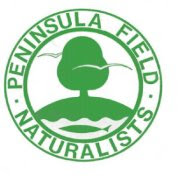October 10
During the Sunday of the Thanksgiving Day weekend, Jean and I participated in the Fall BOS count. Earlier in the morning, we birded as a group with a few fellow Niagara birders and successfully ticked Swamp Sparrow for the year list. We went our separate ways after birding the Port Weller east pier and Jean and I stopped at Firemen's Park to commence the count in our assigned area. The park is located on the Niagara Escarpment and I have many memories of visiting it on family hikes when I was a kid. Though urbanization has occurred to the southeast, the park looks the same.

The rolling landscape, large pond and trails (including the Bruce Trail) are still there and provide a habitat for a variety of birds. Wait, did I say rolling hills and trails? This would be a great spot for some cyclo-cross racing.

Image courtesy of Zoom Leisure Bikes
As we started our walk through Firemen's Park, Jean spotted a
Yellow-rumped Warbler in the trees near the parking area. That would be it for wood warblers at this location. A large number of
American Robins (40+) were seen throughout the park and while walking the forest trails north of the pond, we found another thrush species, 2
Hermit Thrushes. Wood Thrush remains off the year list and will most likely not be found this year.
Approaching an open area on the east side of the park, Jean observed movement in some Sumacs. It was a large Emberizid, a family that includes the towhees, sparrows, longspurs and Emberiza buntings. Upon observing the bird, Jean quietly called out, "Towhee!" "Towhee!". At first I could not get on the bird and I feared it would leave before I could tick it for the year list. This is a species we do not see too often and though it was heard during the Carden Alvar trip, we decided not to count the bird at that time. The Eastern Towhee jumped into view and I got some great looks at a male of the species, #198 for the Ontario year list, before it continued on its way through the brush. Woo hoo! New personal best for Jean and I. Other birds observed before we left the park included Carolina Wren, Northern Flicker and Eastern Phoebe.
The following Sunday, a day of cyclo-cross took place at Firemen's Park


Images courtesy of Zoom Leisure Bikes
Steve deBoer of Zoom Leisure Bikes set up the course.....


Images courtesy of Zoom Leisure Bikes
....and like the BOS FAll Count, it was a terrific day for some members of the St. Catharines CC.
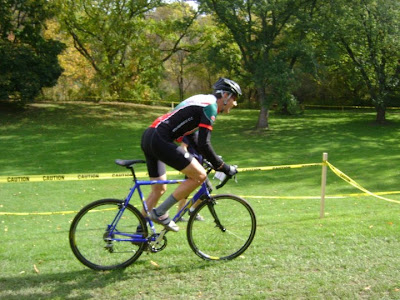

Images courtesy of Zoom Leisure Bikes
Returning to the BOS Fall count, we travelled along the northern edge of our area and then on to the Niagara Parks Botanical Gardens.

We walked through the arboretum and observed
many Dark-eyed Juncos and
Cedar Waxwings.Above the Falls, Jean and I explored the usual birding spots. Nothing unusual spotted and unfortunately, none that required the completion of a verification report. Hopefully this will be the year a Purple Sandpiper is found on the rocks during the
OFO Niagara River Gull Watch.
A bit of excitement at the control gates. I was almost done counting the gulls (Ring-billed and Herring) standing on the break wall when a Niagara Parks Police officer used a siren to inform tourists and birder to move along and leave the no stopping zone. In the winter, some good birds can be found on the break wall as well as the river and it is best to park at Dufferin Islands and walk to the overlook. You'll still be thought of as a crazy birder but at least you will not be told to move along.
The feeders in the village of Chippawa (last stop on the OFO trip) were not too active. No Tufted Titmouse or Red-bellied Woodpeckers on this day.
The best bird spotted in the afternoon was from the family Vireonidae
. We drove along the north side of the Welland River adding very little to the checklist. The road turns north into an industrial area and eventually leads to a field that is now zoned for residential development. We were only one block away from a major urban Niagara Falls road when Jean and I found a solitary (I could not resist)
Blue-headed Vireo in the brush at the side of the road.
A good day of birding for the BOS Fall Count. We observed 45 species and added
Swamp Sparrow and
Eastern Towhee to the year list during the time we birded by car and on foot. Only 2 more species and we will have reached our goal of 200. There's still plenty of time and with an OFO trip planned and a couple of Christmas bird counts, 200+ is becoming more of a certainty with every day.
Many thanks to Rebecca and Steve deBoer of Zoom Leisure for allowing their images to appear on this post.








